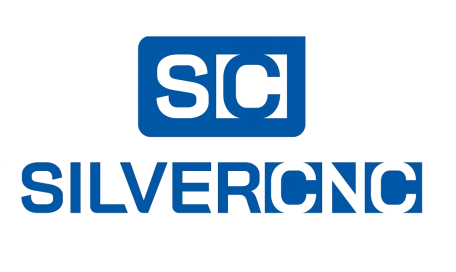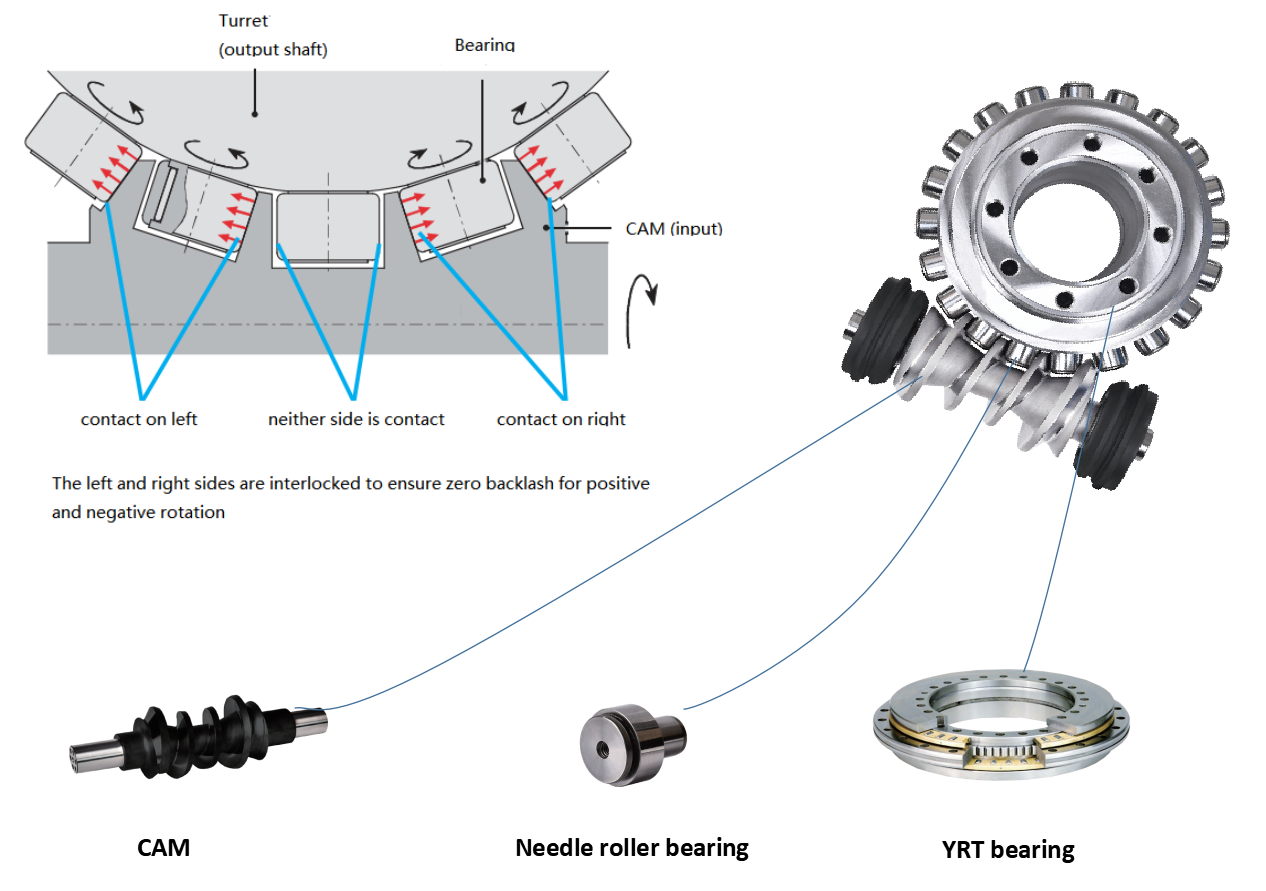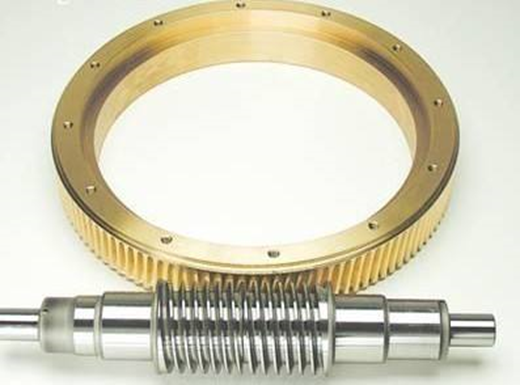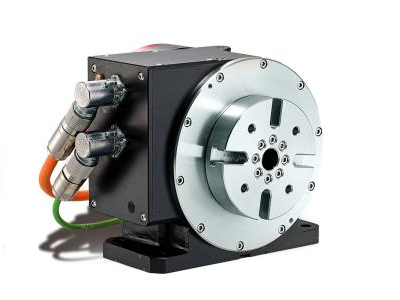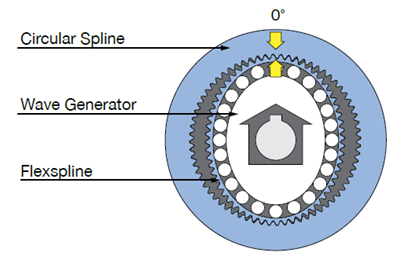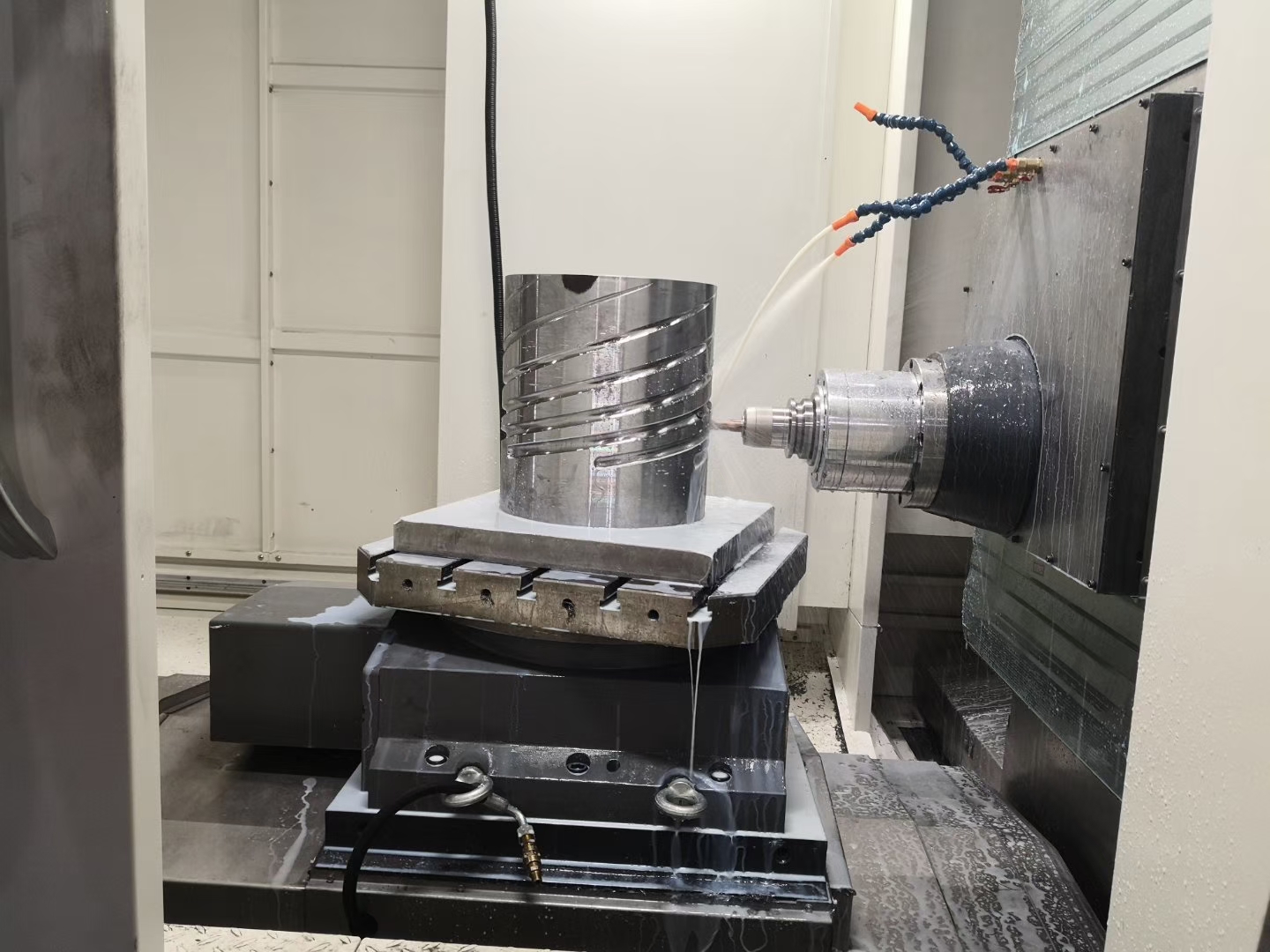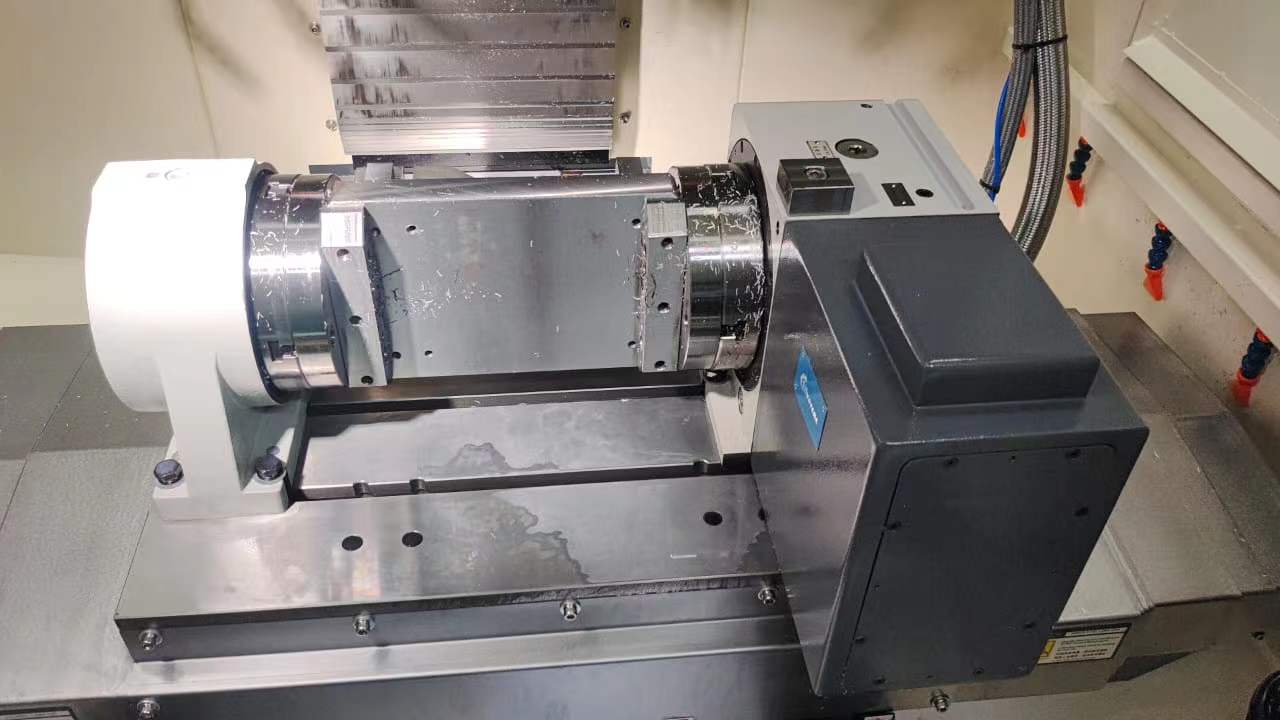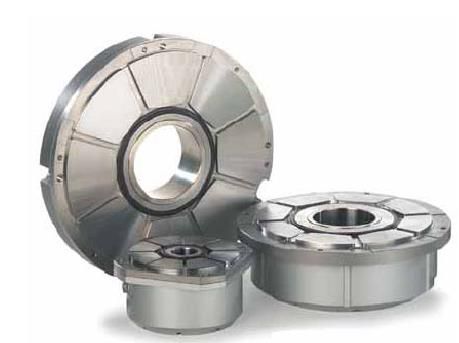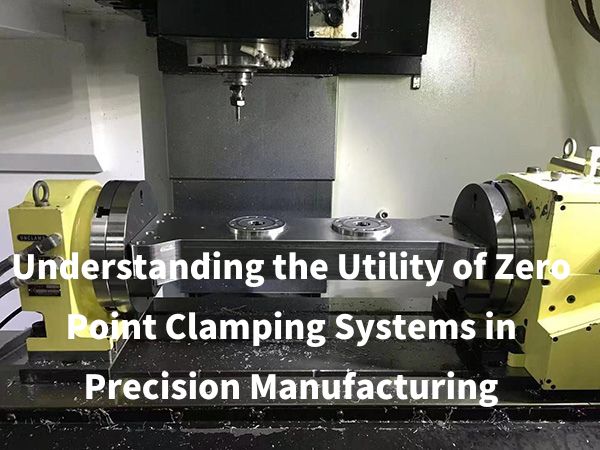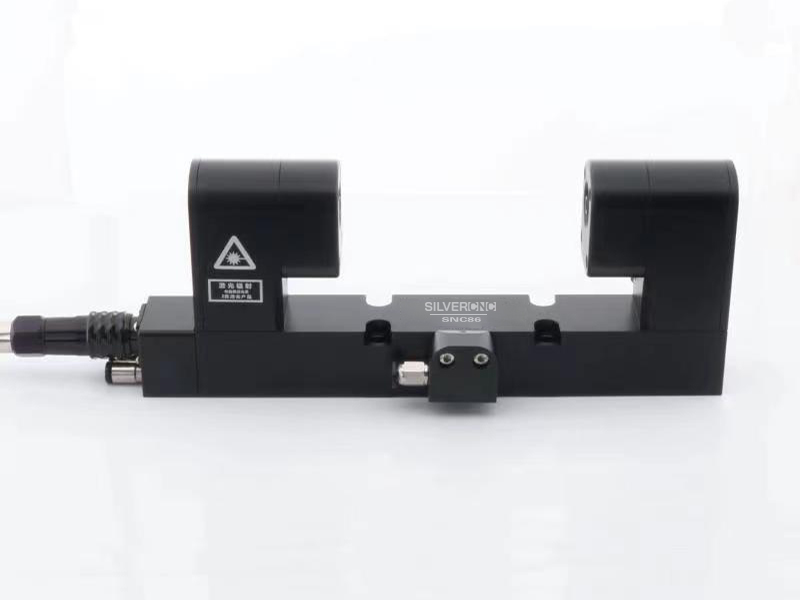The rotary table is a precision tool used in machining to position workpieces at specific angles, allowing for intricate designs and accurate cuts. This article will explore the fundamental mechanism behind rotary tables, the common structural types, and how they enhance machining processes for greater efficiency and precision.
What is a Rotary Table?
A rotary table is a precision device that positions a workpiece at specific angles during machining. You use it to enhance the accuracy of face or side surface machining. The rotary table’s primary function involves rotating the workpiece to allow for precise cuts and intricate designs. By incorporating a rotary table, you achieve higher precision and repeatability in your projects. This tool becomes indispensable when you aim for meticulous detail and efficiency in manufacturing processes.
How Do Rotary Tables Work?
Basic Mechanism
Understanding the basic mechanism of a rotary table helps you appreciate its role in machining. The rotary table consists of several key components that work together to achieve precision.
- Components of a Rotary Table
A rotary table typically includes a circular base, a rotating disc, and a locking mechanism. The circular base provides stability, while the rotating disc allows you to position the workpiece at various angles. The locking mechanism ensures that the disc stays in place during machining. Some rotary tables also feature a scale or dial for precise angle measurement.
- Operation Principles
Operating a rotary table involves rotating the disc to the desired angle and securing it with the locking mechanism. You can then perform machining operations with high precision. The rotary table’s design allows for smooth and controlled movement, which is crucial for achieving accurate cuts and designs. By understanding these principles, you can effectively use a rotary table to enhance your machining projects.
Integration with Machining Tools
Integrating a rotary table with machining tools expands its functionality and versatility. You can use it with both manual and automated systems, depending on your needs.
- Compatibility with CNC Machines
Rotary tables are compatible with CNC machines, allowing you to automate complex machining tasks. By connecting a rotary table to a CNC machine, you can program precise movements and angles. This integration enhances efficiency and accuracy, making it ideal for intricate designs and repetitive tasks. You can achieve consistent results with minimal manual intervention.
- Manual vs. Automated Operation
You have the option to operate a rotary table manually or through automation. Manual operation gives you direct control over the positioning and movement of the workpiece. This method is suitable for simple tasks and when you need to make quick adjustments. Automated operation, on the other hand, involves using CNC machines to control the rotary table. This approach is beneficial for complex and repetitive tasks, as it reduces human error and increases productivity.
Four Rotary Table Mechanisms
At present, CNC rotary table mainly includes four kinds of structure that cam roller, worm gear, DD and harmonic structure. The following is the introduction
(1) Roller Cam Structure
SILVERCNC rotary table adopt roller cam indexing zero clearance drive technology, which has incomparable advantages over other mechanism rotary tables.
The arc surface indexing principle applied in cam roller drive is the most accurate motion control mode at present. The work piece is composed of an input shaft (arc surface indexing cam) and a roller (output shaft). The cam surface on the input shaft is in linear contact engagement with the outer ring surface of the driven roller element on the roller, so as to drive the runner (i.e. worktable) to rotate. The driven roller element uses an internal roller bearing to transmit torque during rotation. This ensures zero backlash, excellent working accuracy and efficiency, effectively avoids internal parts loss and provides a lasting high-precision working state.
characteristic
Zero backlash structure → achieve accurate positioning and higher accuracy
Roller and cam rolling transfer → fast positioning, higher efficiency, and minimize invalid positioning time
Preloading design → always maintain zero back clearance and maintenance free
The contact surface between roller and cam is large → the rigidity is higher than that of worm gear structure rotary table。
(2) Rotary Table with Worm Gear Structure
The two shafts of worm gear drive are crossed and perpendicular to each other; The worm can be seen as a spiral with one tooth (single head) or several teeth (multiple heads) wound along the spiral line on the cylinder. The worm gear is like a helical gear, but its teeth are wrapped around the worm. During meshing, once the worm rotates, it drives the worm gear to rotate one (single head worm) or several teeth (multi head worm). The turbine is made of phosphor bronze, which can not be preloaded and has poor rigidity. With the use and wear, the accuracy of the rotary table decline, resulting in extremely high later maintenance cost, which brings many troubles and economic losses to machine tool users and agents. In order to avoid the shortcomings of worm gear structure, the materials of worm gear need special treatment (such as NIKKEN, Lehman and other high-end brands), but the price is expensive and customers can’t afford it.
(3)DD Structure Rotary Table
DD structure is that the torque motor directly drives the table. The strong torque of the product enables it to be directly connected with the moving device, thus eliminating the connecting mechanisms such as reducer, gearbox and pulley. Generally, this type of motor is equipped with a high-resolution encoder, so that the table can achieve a level of accuracy higher than the ordinary servo. In addition, due to the direct connection mode, the positioning error caused by the mechanical structure is reduced, and the process accuracy is guaranteed. On the other hand, for some camshaft control modes, on the one hand, the dimensional error caused by mechanical structure friction is reduced, on the other hand, the noise during installation and use is also greatly reduced. However, heating is always an unsolved problem for motor direct drive rotary table. Motor heating will lead to bearing deformation, resulting in axis offset, flatness reduction and poor machining accuracy. In addition, the torque of the direct drive motor is small, resulting in poor rigidity, which is suitable for machining and has a small selection range of work pieces. In recent years, the hot mobile phone industry also has very high requirements for DD table. When we make mobile phones, we need a touch probe. The probe transmission signal through infrared. DD table will interfere with the signal because of the current. At present, only FANUC can solve this interference problem, but the price is high, which is difficult for most downstream NC machine tool users in 3C industry to bear.
(4)Harmonic Structure Rotary Table
Harmonic reducer is a kind of wave generator composed of fixed internal tooth rigid wheel, flexible wheel and radial deformation of flexible wheel. Harmonic reducer is a new transmission structure in gear reducer. It uses flexible gear to produce controllable elastic deformation and cause relative staggered teeth between rigid wheel and flexible wheel to transmit power and motion. This kind of transmission is essentially different from the general gear transmission, and has particularity in meshing theory, set calculation and structural design. The lubricating grease in the harmonic reducer can not replace the lubricating oil as easily as the cam roller rotary table, so it is easy to cause wear. The internal flexible wheel of harmonic reducer can not bear large torque, so it can only be used for small and light cutting work pieces.
Get Precision and Efficiency with SILVERCNC Rotary Tables
At SILVERCNC, we design and manufacture high quality rotary tables that are built to take your machining processes to the next level. Our precision rotary tables are designed for seamless integration with CNC systems, ensuring exceptional accuracy and repeatability for every project. With our advanced technology, you can handle complex operations and high-demand tasks with ease, all while achieving consistent results. Get in touch with us today to learn more about how our rotary tables can enhance your production efficiency and precision.
FAQs
1.What is the purpose of a rotary table?
A rotary table is a mechanical device used in drilling and machining to provide rotational force and enhance operational efficiency. In drilling, it transmits power to the drill string, enabling the creation of boreholes by rotating the drill bit. It also supports the drill string during connections for stability and safety. In machining, rotary tables allow for intricate cuts and multi-axis machining, improving precision and reducing manual repositioning. Overall, rotary tables are essential for achieving complex geometries and enhancing productivity in both industries, making them invaluable tools for engineers and operators alike.
2. What are the different types of rotary tables?
Rotary tables are versatile tools used in machining and manufacturing, available in several types to suit various applications. Air-bearing rotary tables provide frictionless motion for high-precision tasks, while oil hydrostatic rotary tables use an oil film for smooth operation, making them ideal for grinding. Mechanical-bearing rotary tables are more general-purpose and can handle a wide range of applications. Rotary index tables allow for precise machining by rotating workpieces at set increments, and 4-axis and 5-axis rotary tables offer additional rotational capabilities for complex machining operations. Each type is designed to meet specific needs in industries such as aerospace, automotive, and electronics.
3. How to use a rotary table?
To use a rotary table effectively, start by securing the workpiece to the table’s surface using clamps or a vice. Adjust the table’s rotation with the handwheel or motor controls to achieve precise positioning. Align the workpiece to the desired angle or coordinate on the machine’s axis. Rotate the table slowly and make any necessary adjustments for accuracy. For improved precision, use the indexing feature for controlled movements. Regular maintenance through cleaning and lubrication ensures smooth operation. Mastering rotary table use increases efficiency and ensures accurate results in milling, drilling, and CNC machining tasks.
4. What Key Factors Should Be Considered in Rotary Table Design?
When designing a rotary table, several critical factors ensure optimal performance and precision. First, select the right drive mechanism (servo-driven, worm gear, or direct drive) to meet torque and speed requirements. Torque capacity is crucial for smooth acceleration and handling load inertia. Ensure the table can support both axial and radial loads by using high-quality bearings. For positioning accuracy, integrate rotary encoders and CNC systems. Minimize backlash with precise mechanical components, and maintain a balanced inertia ratio between the motor and load for stability. Addressing these factors results in reliable and high-performance rotary tables for manufacturing applications.
